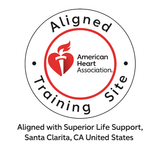Introduction
When it comes to saving lives during emergencies, time is of the essence. Cardiopulmonary Resuscitation (CPR) and Automated External Defibrillators (AEDs) are critical tools that can make a life-or-death difference in the moments before professional medical help arrives. While CPR training is often associated with healthcare professionals, its significance goes beyond the confines of medical facilities. Empowering ordinary community members with CPR skills can create a network of lifesavers ready to spring into action during emergencies. In this blog, we will explore the importance of CPR training for community members, share inspiring stories of successful initiatives, and discuss how businesses, schools, and organizations can contribute to creating a safer and more prepared community.
The Significance of CPR Training for Community Members
Cardiac arrests can happen anywhere, at any time, and to anyone, regardless of age or health status. Immediate CPR administered by a bystander significantly increases the chances of survival for the victim. According to the American Heart Association (AHA), the survival rate for sudden cardiac arrests can be doubled or even tripled when CPR is initiated promptly. Given that the majority of cardiac arrests occur outside of medical facilities, having trained individuals within the community is crucial for saving lives.
Unfortunately, studies have shown that the general public's knowledge of CPR is often limited, and many people hesitate to act during an emergency due to fear or uncertainty. By providing CPR training to community members, we can overcome these barriers and equip individuals with the confidence and skills to respond effectively during critical situations.
Showcasing Successful Community-Based CPR Training Initiatives and Their Impact
Across the globe, numerous successful community-based CPR training initiatives have been making a positive impact. One such initiative is the "CPR Champions" program in a small town in the United States. The local fire department collaborated with schools, businesses, and community organizations to train citizens in CPR and AED use. As a result of this collective effort, the town witnessed a significant increase in the number of bystanders providing CPR before emergency medical services arrived, leading to a rise in survival rates.
Another exemplary program is "Heartbeats for Life" in a community in Europe. This initiative involved local healthcare professionals and volunteers conducting regular CPR workshops in community centers and public spaces. Over time, this community saw a noticeable improvement in CPR awareness and participation, leading to more lives saved and a sense of communal responsibility for each other's well-being.
Encouraging Local Businesses, Schools, and Organizations to Invest in Community CPR Training
Local businesses, schools, and organizations play a vital role in fostering a culture of preparedness within their communities. By investing in CPR training for their employees, students, and members, they can create a network of individuals equipped to respond during emergencies. This not only benefits the community but also enhances the organization's reputation as a responsible and caring entity.
Many organizations have already taken steps in this direction. For instance, several progressive companies have incorporated CPR training as part of their employee development programs. Some schools have made CPR education a mandatory part of their curriculum, ensuring that every graduate leaves with life-saving skills. Additionally, community organizations, such as Rotary Clubs and Lions Clubs, have actively contributed by funding and organizing free CPR training sessions for the public.
Heartwarming Stories of Bystanders and Community Members Who Saved Lives Using CPR and AEDs
The impact of community CPR training is best illustrated through heartwarming stories of ordinary individuals turning into heroes during emergencies. One such story is that of a high school student who used CPR skills learned in school to save a fellow classmate who collapsed during a sports event. Quick action from the student, along with the availability of an AED on the school premises, led to the classmate's survival and inspired the entire school community to prioritize CPR training.
Another touching account comes from a small town where a restaurant employee administered CPR to a customer who suffered a cardiac arrest while dining. The restaurant had invested in CPR training for all staff, and this life-saving response not only saved a patron but also created a positive image for the establishment as a safety-conscious place.
Tips for Organizing Community CPR Training Events and Increasing Community Preparedness
Organizing community CPR training events requires thoughtful planning and collaboration. Here are some tips to ensure successful initiatives:
-
Partner with Local Authorities and Medical Professionals: Collaborate with local fire departments, hospitals, and healthcare professionals who can provide expertise and resources for CPR training.
-
Use Technology and Social Media: Leverage social media platforms and technology to raise awareness about upcoming CPR training events and encourage community participation.
-
Offer Free or Subsidized Training: To attract a diverse audience, consider offering free or subsidized CPR training, especially for underserved populations.
-
Engage Schools and Youth Groups: Involve schools and youth organizations to instill a culture of preparedness from an early age. Young individuals can be influential advocates for CPR training within their families and communities.
-
Recognize and Celebrate Lifesavers: Acknowledge and celebrate individuals who have used their CPR skills to save lives. This recognition reinforces the importance of CPR training and motivates others to get involved.
Conclusion
CPR and AEDs are not just tools for healthcare professionals; they are life-saving skills that every community member should possess. The impact of community-based CPR training initiatives is evident in the lives saved and the sense of solidarity they foster within neighborhoods and towns. By encouraging local businesses, schools, and organizations to invest in CPR training and sharing heartwarming stories of bystanders turning into heroes, we can create a culture of preparedness that saves lives together. Let us strive to make CPR education accessible to all, empowering communities to stand strong during emergencies and protect each other with the power of knowledge and action.


